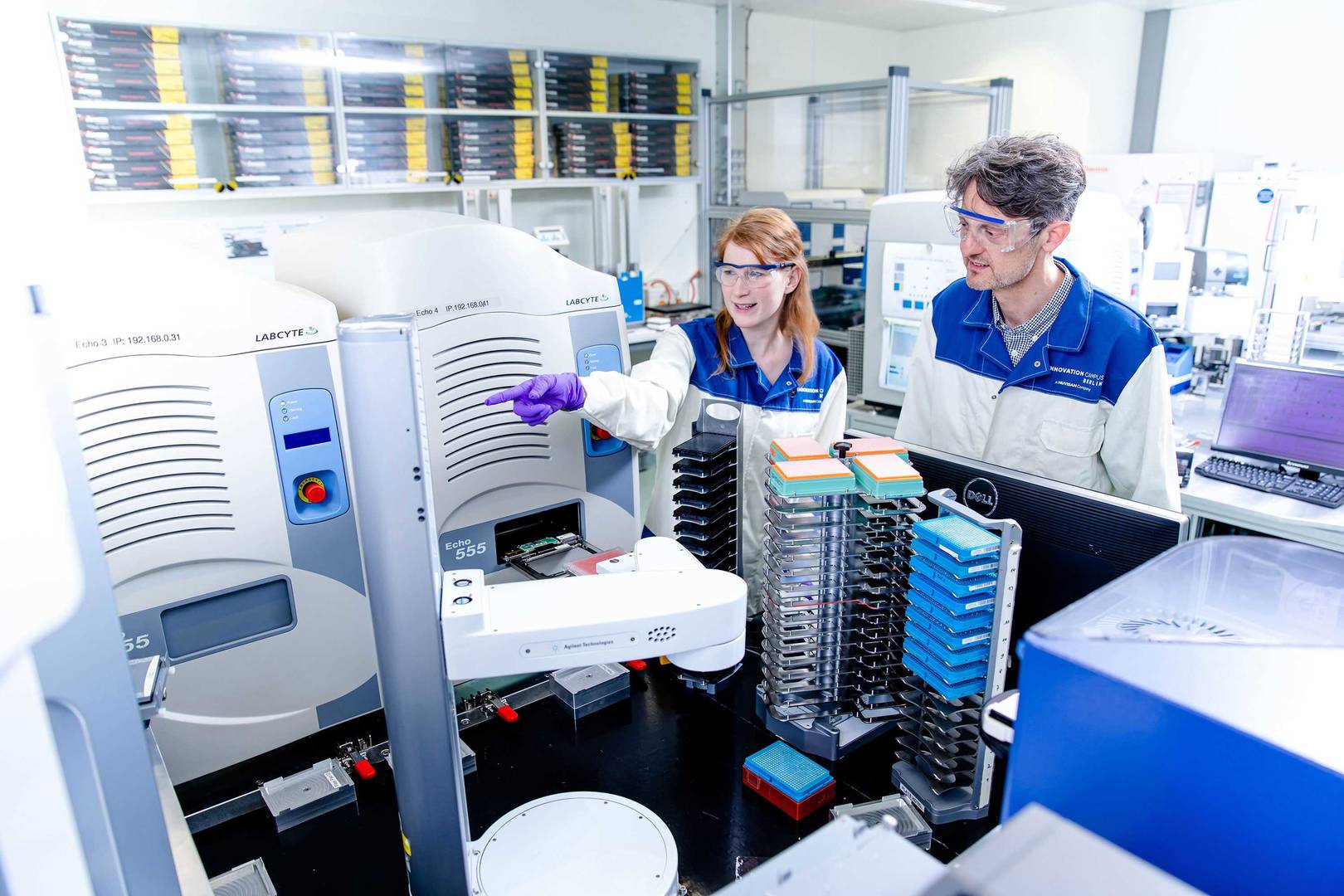
We aid your search for chemical matter for your target with our integrated target-to-lead pipeline. We offer assay development for high-throughput screening (HTS) of a 3-million-compound library, fragment screening and virtual screening. Hit compounds are broadly characterised in biochemical and cellular assays; their binding modes are interrogated by biophysical, MS-based and structural biology methods. We have decades of big pharma expertise, and our medicinal chemists can rapidly advance hit chemistries into viable lead structures that align with your project needs.
The primary screening campaign occupies a key position in the preclinical drug discovery process. HTS is used to identify molecules with suitable target-specific properties en route to developing a promising drug. In our fully automated HTS laboratories, we offer miniaturised, cost-effective biochemical, cellular and phenotypic assays for hit-finding campaigns. Our state-of-the-art equipment enables both microplate-intensive screening of complex, million-member libraries and focused screening of smaller sub-libraries, such as those tuned to target structural properties.
We offer fragment screening as a complementary hit-finding approach, if suitable for your target. High-throughput crystallography is combined with other biophysical methods to identify initial binders using internal Nuvisan fragment libraries. Our medicinal chemists subsequently apply fragment growing, merging or linking approaches as they advance your initial binders into attractive lead structures, while also helping improve potency and selectivity.
Virtual screening campaigns provide a cost-effective alternative to conventional hit-finding methods. Our experts in digital life science routinely conduct screens against client targets using our internal proprietary chemical database (Life Science Database), as well as external on-the-shelf and make-on-demand libraries. Cutting-edge digital technologies are used to quickly identify lead structures with favorable predicted ADMET properties. The scientific question at hand determines the screening approach best suited to your project.
Our experienced team of scientists designs and generates customised cell models reflecting relevant disease processes for deconvolution of your screening hits. Tailored plate reader methodologies can be applied, such as for a broad range of reporter assays. Using our state-of-the-art robotic high-content imaging platform, cellular phenotypes can be measured that confirm hit compound effects in specific signaling cascades or other biochemical pathways.
To efficiently drive your project forward, a multidisciplinary team of experienced scientists analyses your screening hit lists. Digital filtering methods and expert interpretation are used to select hits for advancement. To provide you a comprehensive overview of hit cluster properties, various PhysChem properties (e.g., solubility, polarity) are interrogated. The binding mode of selected derivatives is analysed with a combination of biophysical, MS-based and structural biology methods (e.g., NMR, X-ray crystallography or cryo-EM). This valuable information aids structure–activity relationship (SAR) understanding and supports the hit optimisation process. Finally, characterisation of ADME properties for the selected hit compounds is essential to identify suitable lead structures.
We have long-standing expertise in the hit selection process of assessment, modification and rapid expansion of different hit clusters into lead structures to fit your compound profile. Based on the hit profile and your target product profile, we define a project-specific screening tree that includes all relevant assays for the identified liabilities. Working together with our digital scientists, we take advantage of computer-aided approaches during design cycles. We apply state-of-the-art synthetic methodologies (e.g., photochemistry, electrochemistry and late-stage diversification), as well as microbiological chemistry, to quickly synthesise target compounds-of-interest, and we have expertise in modalities beyond small molecules, including PROTAC®s, antibody–drug conjugates and peptides.
Our target-to-lead solutions cover: